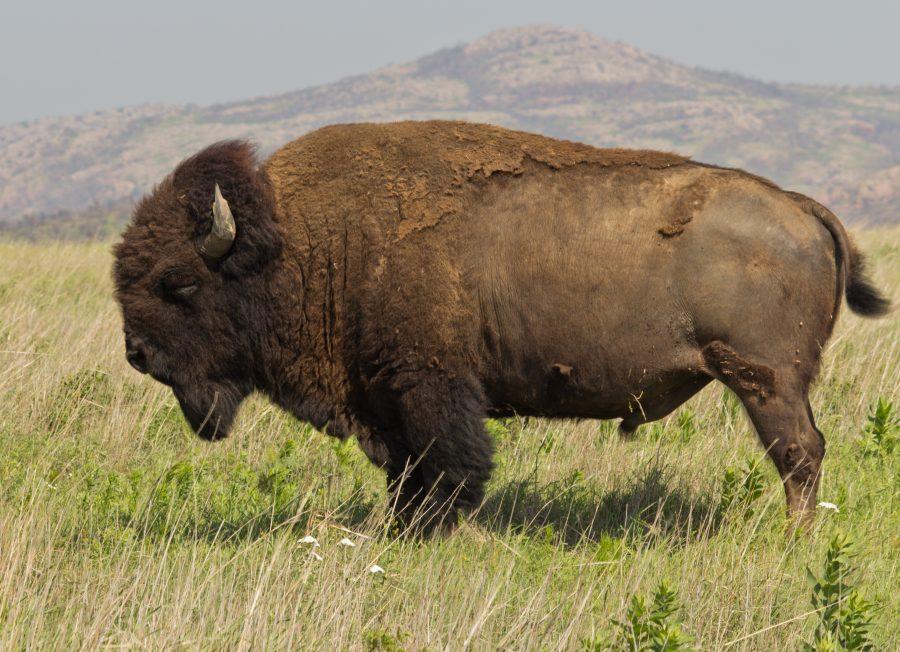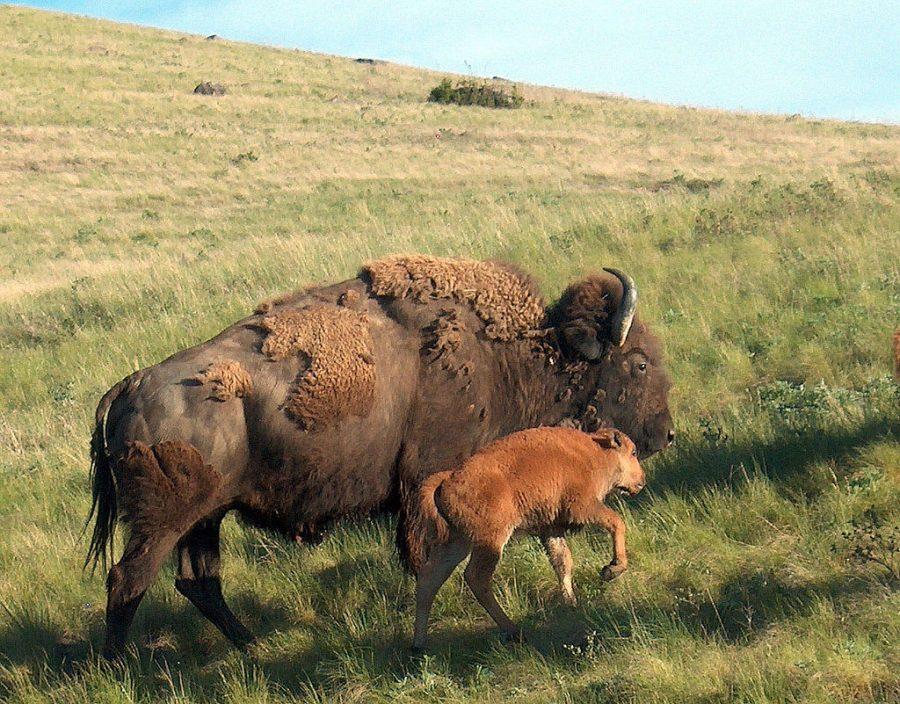On May 9, President Barack Obama signed into effect the National Bison Legacy Act.
With the enactment of the bill, The American Bison, or American Buffalo as it is more commonly known, is now considered a National Mammal, joining the Bald Eagle as a national animal of the United States. The American Bison is the United States’ first national mammal.
Bison are large, four-legged mammals that are brown, have a large head, and also have a large hump at their shoulders. Female bison (or cows) are from 5-feet to 5-feet-1-inch in height and can weigh from 702-1,202 pounds. Males (or bulls) are significantly bigger in height and weight, 5-foot-5-inches to 6-foot-1-inch, and can range in weight from 1,199 to 2,000 pounds. The nomadic animals have a very good sense of smell and good eyesight.
Historically, there were millions of bison that roamed throughout the United States. During the expansion and settling of the West, thousands of them died because of buffalo hunters, as well as the United States Army killing many to deny the various Native American tribes the source of meat that they relied on.
Currently, bison are listed by the International Union for Conservation of Nature as “near-threatened.” According to a 2012 census conducted by the United States Department of Agriculture (USDA), there are about 20,000 that live in public lands which include national parks and national wildlife refuges which are run by the United States Fish and Wildlife Service. Additionally, there are about 162,100 that are privately owned by farmers and ranchers. There are also state-run herds in 11 states.
While the new status is only symbolic and does not give the animal any kind of additional protection, the hope is that the new status will help efforts to reintroduce the creature back into the wild.
Earlier versions of the bill were introduced two times before, once in 2012 and again in 2013. The current version of the bill that went into effect was introduced in June 2015. The bill was led by Missouri’s 1st Congressional District state representative Lacy Clay, Jr (D-MO).
Various supporters have pushed for the bill including conservationists, ranchers, and Native American tribes. Each group comes with their own reasons for supporting reintroduction. Ranchers have supported the bill because of the economic benefits which are mainly a “healthy meat source contributing to the food security of the United States” which was noted in the USDA 2012 census. The various tribal groups have supported the bill because they see the bison as being “integrally linked with the economic and spiritual lives of many Indian tribes through trade and sacred ceremonies.”
Of the many tribal supporters, one of the most notable is the InterTribal Buffalo Council. The Council is based out of Rapid City, South Dakota and consists of more than 60 tribes from the United States. Collectively the tribes have a “combined herd on more than 1,000,000 acres of tribal land” according to the bill.
While the bison has not received any additional protections under the new bill, the National Bison Legacy Act may spur additional legislation down the line.
A female bison and her calf at the National Bison Range in Montana






















































